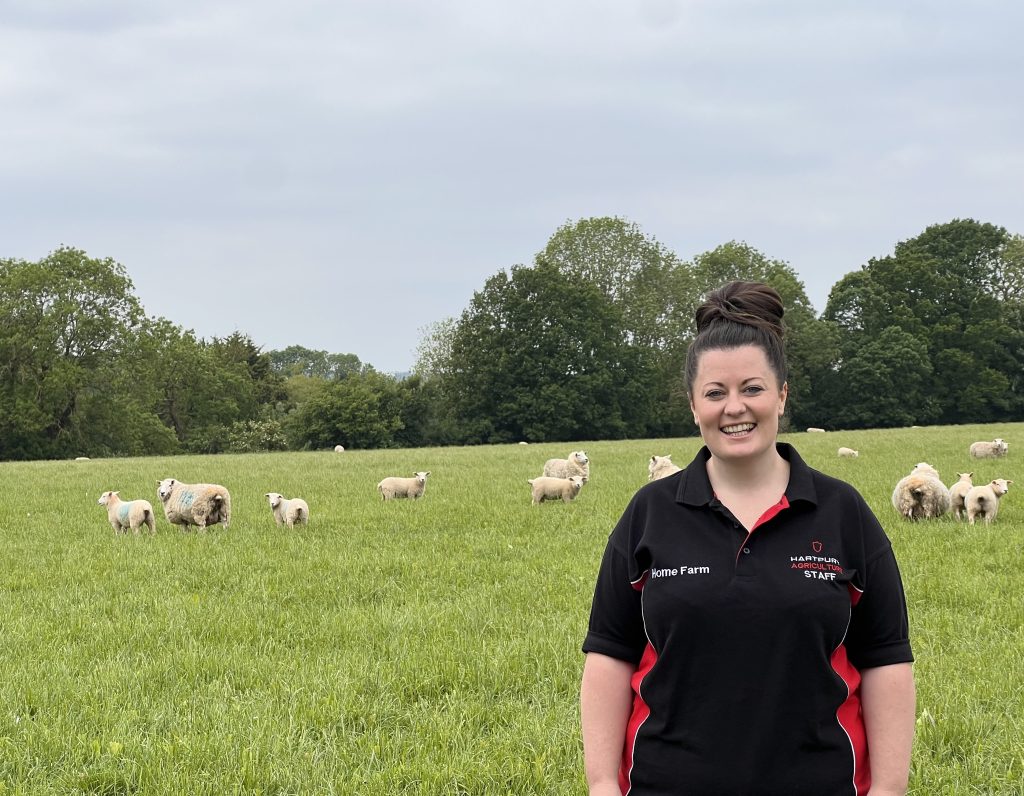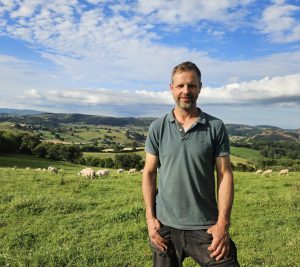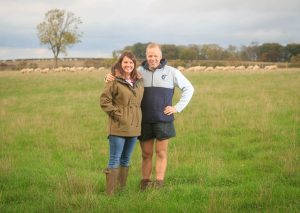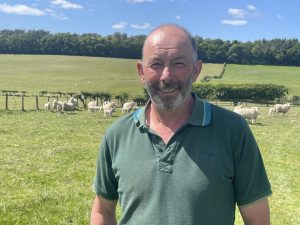with thanks to Meg Lawrence, livestock manager at Hartpury University and College.
Restocking with quality maternal genetics was the real driver for Meg Lawrence when she had the opportunity to make significant changes to Hartpury University and College flock’s genetics. 2023 witnessed her swapping a traditional flock for Highlanders from Innovis, shortly after being appointed Hartpury’s livestock manager and veterinary technician.
“We are right at the beginning of our journey with Highlanders which are scheduled to have an impact on the flock for the long term,” she says. “Reducing concentrate fed and subsequent costs are amongst my plans so I wanted milky ewes that could perform and lambs that could fast finish off forage based systems. I also wanted to develop a healthy closed flock. And with just one lambing in the bag, I can honestly say so far, so good. I’m really pleased with their performance. 96% lambed within the first three weeks, they proved to have good udders and they milked well right from the start.
“Furthermore, compared with our previous ewes, very few required assistance at lambing which was perfect for this unit which is focused on teaching the students best practice together with basic general husbandry.”
Hartpury flock performance 2023 v 2024
| Mules | Highlanders | |
| Ram : ewe ratio | 1 : 40 | 1 : 70-80 |
| Ram longevity (ave mating seasons) | 4 | 5 (expected) |
| Scan % | 186 | 214 |
| Reared % | 167 | 191 |
Source: Hartpury College
When Meg arrived to Hartpury, the flock comprised 400 North Country Mules and Suffolk Mule crosses. “After 2023 lambing I made the decision to change the genetics and after heavy culling and health screening it was clear none of this flock would remain.
I was aware that investing in new maternal genetics was a decision that could influence the flock’s performance for up to 10 years…
“I was aware that investing in new maternal genetics was a decision that could influence the flock’s performance for up to 10 years, however I was keen to introduce some efficient sheep and I’d had positive previous experience working with Highlanders. I also admired Innovis’s strategy of breeding and rearing stock suitable for the system in which it is farmed. I like how forward thinking Innovis is and how it is changing the industry from ‘doing what sheep farmers have always done’ to, what it’s possible to do.”
The farm was rested over the summer period before introducing 220 Highlander ewes from a known source. “Buying all the ewes from one place and knowing their history was important to me and it just so happened that they were coming from a very similar unit and farming system to Hartpury’s. Perfect timing.”
The flock was turned out on to a rotational grazing system as soon as the ewe had bonded with her lambs, this year it was within 48 hours of birth, she explains. “This is an extremely wet lowland unit, running between the Rivers Leadon and Severn so we experience a lot of flooding from autumn to spring; furthermore indoor lambing provides the students with hands on learning experience and teaching experience for us.”
She continues: “This is our first year with the Highlanders so I can’t yet say we have a particular fool proof breeding strategy, however, we have stuck with Innovis terminal sires, some were existing and used on the previous flock and last year we purchased two more Aberfield SR rams.
“We ran five different tupping groups with two objectives in mind; firstly to breed our own replacement ewes – pure Highlander as well as the Aberfield SR Highlander crosses which I’m calling these Aberlanders, and secondly to weigh record lambs from our terminal sires including, Aberblacks and Abermax to see which lambs perform well and finish the quickest. When we know which cross works best for us, we can make further fine tuning.”
Being a centre for agri education means I want to show the students what is possible alongside best practice…
She adds: “Being a centre for agri education means I want to show the students what is possible alongside best practice, and I feel using Innovis breeding is really contributing to that. Cutting the ewe numbers from 400 to 220 and working with quality over quantity approach has worked wonders in our first eight months, before we gradually start to increase numbers again.”



